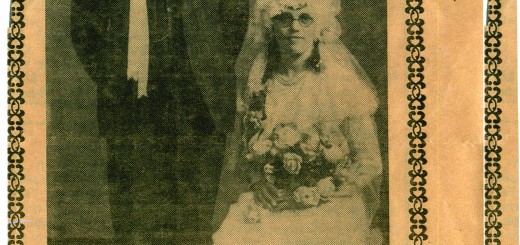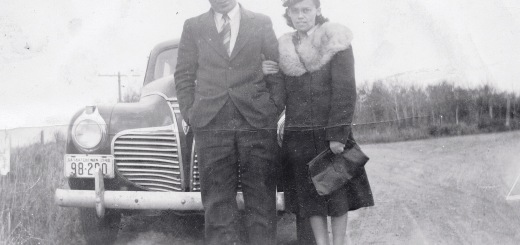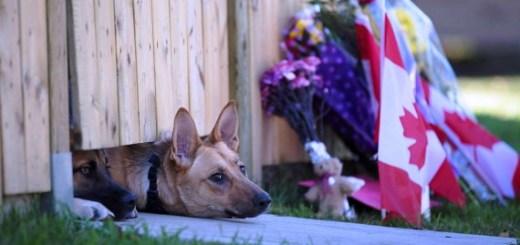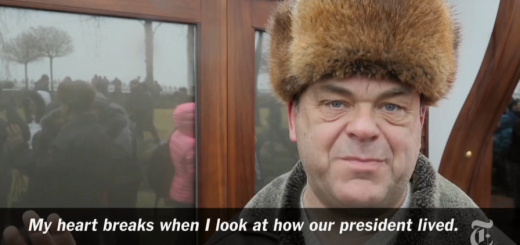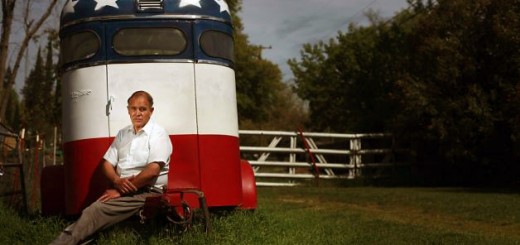What it Means to be a Rural Woman, Part II
Operator, long distance, please . . . .
My Mother (1944-1959)
By ’44 or so, Mother moved the family from the southeast corner of the half-section of land, to the northwest corner, where the new white house trimmed with a navy blue was eventually constructed.
‘Til then they continued to live in the clapboard shanty which moved with them to the north 40. Yes, the same shanty that was later “re-purposed” for the chickens.
Orest’s pony, Star, would welcome their day around dawn by poking his nose against the wooden window shutter, opening it into his master’s bedroom. Polly, the cat, would end their day by snuggling up on the family radio after supper, near the potbelly stove with the kettle on it.
Ergo, Polly’s name, as in the children’s rhyme, “Polly put the kettle on, Polly put the kettle on, Polly put the kettle on, So let’s have tea”.

There’s Dad standing in the garden with the family home a.k.a. the chicken coop, immediately behind his right shoulder.

Same image of Dad in the garden, only this close-up reveals 8 year old brother Orest in his sailor suit perched on a chair.
The new house came equipped with work crews
Spring seeding and fall harvest took teams of horses, later Case tractors and other equipment, and teams of men, either way.
Each day Mother would prepare breakfast, lunch and dinner for crews of 10 to 15 full-grown, hearty, strapping workmen — one of whom had twelve eggs for breakfast and a pound of bacon all to himself.
Each day there would be a dozen batches of bread to be baked from scratch, eggs to be gathered, the cows fed and milked, milk to be separated into cream, the cream churned into butter, the garden to be tended and picked for produce, dishes and pots and pans to be washed, clothes to be laundered, and many, many cups of coffee to be perked. Never mind pickling vegetables, canning fruit, picking mushrooms, baking pies, and helping out the neighbours. All left to Mother.
Each day.
The new house did not come equipped with plumbing, hot and cold running water, or electricity
Rural electrification in the province of Saskatchewan didn’t light up our lives until the late 50’s. Our home was the first in the ‘hood to be wired for electricity, delivered by a Delco generator in the basement of the house.
A five-foot propane tank in the back yard connected with a four-burner stove and one oven inside the house. That’s where Mother created all the magic.
She’d carry drinking water in pails from the well. A cistern installed in the basement captured rain water which would have “to do” for the entire year. A pump upstairs allowed Mother to fill basins to be heated on the stove each time anything and everything needed to be washed.
Laundry consisted of a “wringer washing machine” and an outdoor clothesline for drying. The dogs had a hey-day with this.
Mother and her broom, not so much.
Milk couldn’t wait. Required immediate separation to prevent spoilage. It was stored in “cream cans” until filled. Mother was able to sell these in the village of Leross along with her eggs.
The toilet was outdoors.
Did I mention the 400 roosters?
After Gravel Roads came along in 1955, somewhere along the way, it was decided that roosters should be hatched, grown, butchered, and sold. That, too, was added to Mother’s daily routine. The feathers were removed by heating caldrons of water outdoors and plucking right after the decapitation. This I remember well.

There’s the Nun again, center stage. My brother, Orest on the far right, and my Mother to his immediate left, circa 1954. They’re surrounded by sand hauled to the farm for the concrete mixer to be used in the construction of the foundation for a barn, granaries and rooster coop.
So where was dad?
Like every other young farmer, he toiled from sun-up to sun-down. Orest was in school but had his share of chores to do before and after.
Yet Dad could always coax a smile from my Mother. There were occasional dances at a small hall down the road. And concerts at Larisa School. Games of three-spot at the neighbour’s, Frank and Francis Gargol. Visiting Uncle Pete and Auntie Sheila Sianchuk a few miles away. And a trip to Wishart to retrieve the mail. Most likely accompanied by a cup of coffee at the cafe or a visit with Auntie Tillie.
Two long, one short
Rotary dial phones didn’t arrive on Saskatchewan farms until the mid to late 1960’s. (Well after Gravel Roads arrived). Mother would call Francis for a chat using a wall, crank-operated phone. The two bells mounted at the top of the phone would chime each time a call was placed, and each member of the party line was assigned a different ring to let them know when the call was directed at them. And being a party line, which meant that several homes shared a single phone line, guaranteed no one any privacy.
The Sworak’s signal consisted of two long rings followed by one short ring.
Joe, that’s our ring. Get the phone, please. If it’s Francis tell her my hands are in the dishwater. I’ll have to call her back.
Just like it was yesterday.

